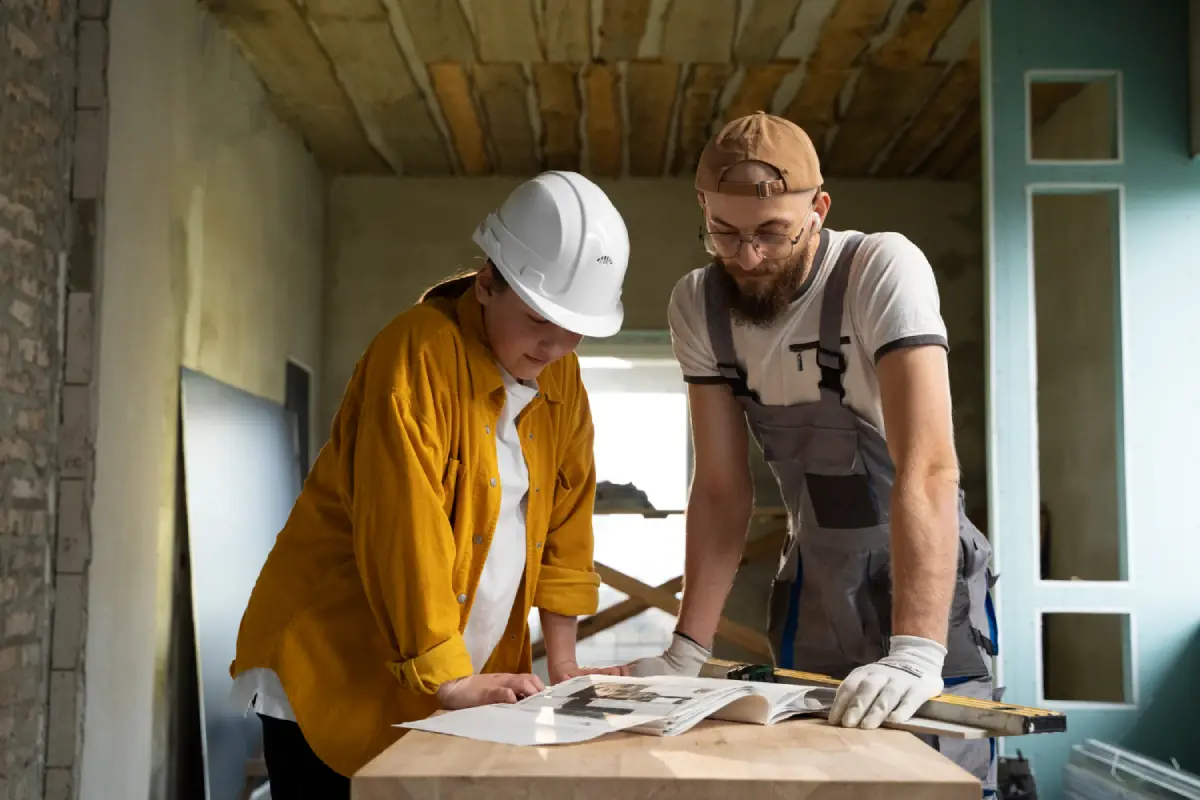
The Timeline of a Custom Home Build: From Start to Finish
The journey to a custom-built home begins with in-depth discussions and careful planning, involving close collaboration with architects, designers, engineers, and contractors. This initial phase is where your vision and priorities start to crystallize and where critical groundwork is laid that will shape the rest of your project. Expect to spend considerable time reflecting on lifestyle needs, design preferences, and financial boundaries alongside practical details like site constraints and zoning requirements.
Key Steps in Pre-Construction
Design and Budgeting: With your architect and builder, you’ll develop detailed house plans that reflect your family’s wants and needs. It’s important to balance creative ambition with the realities of your budget, as even small design changes can have significant cost implications over time.
Factors such as total square footage, functional layouts, preferred finishes, energy efficiency goals, and custom amenities (like a gourmet kitchen or home office) come into play at this stage. If you’re working with experts like Gainesville house buyers to sell your existing home before starting a new build, coordinate timing and finances to ensure a smooth transition.
Permitting: With plans in hand, the next hurdle is obtaining the necessary permits from your local planning department. This can range from a straightforward process to a lengthy bureaucratic maze, depending heavily on municipal requirements, HOA involvement, and the complexity of your build. Be prepared for back-and-forth revisions or neighbor input, as public notices and hearings may be required.
Site Preparation: The property must be ready before construction crews can mobilize. This usually includes clearing vegetation, grading the land for proper drainage, and establishing access routes for vehicles and equipment. Utilities such as water, electricity, and sewer lines should be planned and coordinated in advance.
Patience and diligence are vital during this preparatory period. Thoughtful up-front decisions and comprehensive plans help minimize delays and costly changes down the road.
Foundation and Framing (1–3 Months)
The real transformation begins as your dream home rises from the ground, step by step. This phase is often the most exciting for homeowners and home buyers, as visible progress happens quickly. The weather, the availability of materials, and how well the various teams work together all play a part in sticking to the projected schedule. It’s not unusual for unexpected challenges—like hidden rocks or soil issues—to cause minor adjustments, but these are best addressed head-on.
Main Components
- Foundation: Crafting a stable base is non-negotiable, as the home’s longevity depends on it. Options include a poured concrete slab (common in Florida due to soil and climate), a crawlspace, or a full basement. The foundation must be waterproofed and cured correctly to avoid costly structural issues down the line. Inspections are often required at this stage.
- Framing: Often called the “skeleton” of the house, framing constructs the shape and division of spaces within the home. Walls, floors, roof trusses, and stairwells are erected, transforming abstract drawings into a real, tangible structure. Openings for windows and doors are also built, and temporary bracing ensures everything is level and secure before utilities and finishes are added.
Homeowners often find site visits during this stage particularly rewarding, as seeing each room take shape enhances excitement and confidence in the project. Ongoing communication with your contractor is essential in resolving issues quickly and keeping the build on track.
Mechanical Systems Installation (2–4 Months)
This behind-the-scenes stage brings your home to life as critical systems are laid out and installed. These are the “organs” of your home, required for day-to-day comfort and functionality. Coordination between expert trades—plumbers, electricians, HVAC technicians—is crucial, as their work must be carefully sequenced to fit efficiently within the framework and comply with local codes.
Mechanical Systems Overview
- Plumbing: The installation of pipes and drains throughout the home ensures clean water arrives where it’s needed—kitchens, bathrooms, laundry—while waste is safely routed away. The placement of plumbing fixtures is based on both design and practical considerations.
- Electrical: Electrical wiring, outlets, switches, smart home features, internet lines, and security systems are routed through the walls and ceilings. Depending on your plan, the scope may include pre-wiring for future tech upgrades or sound systems.
- HVAC: Heating, ventilation, and air conditioning systems are vital for health and comfort, especially in climates with seasonal extremes. Proper sizing, placement, and insulation of ducts keep your energy bills manageable and your indoor environment pleasant throughout the year.
Once rough-ins are complete, local inspectors review all systems before installing insulation and drywall. Open communication with your builder ensures that nothing is overlooked and that modifications can be made before walls are closed.
Interior and Exterior Finishing (3–6 Months)
With the home’s “bones” established, attention turns to finishing both inside and out—this is the part of the build many homeowners eagerly anticipate. The selection of finishes, colors, and fixtures finally turns visions into reality, as the personality of your home emerges with each detail.
Milestones of Finishing Work
- Insulation and Drywall: The home’s insulation is fitted within walls, floors, and ceilings, ensuring energy efficiency and climate control. After that, drywall is hung, mudded, and sanded, providing the clean surfaces needed for painting and finishes.
- Flooring and Cabinetry: Chosen surfaces—tile, hardwood, carpet, or luxury vinyl—are installed room by room, each shaping the overall aesthetic. Cabinetry, vanities, and built-in features are also set in place, often defining kitchens and bathrooms.
- Painting and Trim: Paint colors bring warmth or boldness, while trim such as baseboards, crown molding, and custom millwork deliver the visual polish that distinguishes a custom build.
Homeowners are encouraged to finalize fixture selections (lights, faucets, appliances) beforehand, as backorders or delivery delays can set back the entire schedule. Frequent walkthroughs with your builder help spot and resolve issues at this stage.
Final Touches and Inspections (1–2 Months)
As your property transitions from a construction site to a finished home, focus shifts to the many smaller details that complete the project. Now, the process centers around preparing everything for safe and comfortable living and achieving full legal compliance.
Critical Last Steps
- Fixtures and Appliances: The final installation of hardware—door handles, bathroom fixtures, light fittings—and major appliances marks the home’s practical readiness for living.
- Landscaping: Curb appeal comes alive as lawns are seeded, gardens are planted, trees are positioned, and hardscaping (walkways, driveways, patios) is finalized. This boosts property value and frames the first impression for visitors and neighbors alike.
- Inspections: Building officials conduct thorough checks to ensure every system meets safety codes. Any “punch list” of open tasks should be addressed promptly, as approval is needed to secure your certificate of occupancy.
Take this opportunity to review every detail with your builder. A proactive approach ensures that lingering issues are resolved quickly and that your builder is behind their commitment to quality and safety.
Move-In and Post-Construction (1 Month)
Finally, the payoff for all your preparation and patience arrives. This last stage includes a meticulous final walkthrough with your builder, close-out paperwork, and the official transition into your new space. Now is the time to celebrate your achievement—and address any last tasks.
- Final Walkthrough: Review all aspects of the completed home with your builder. Document any imperfections or incomplete work, which is typically handled in the final punch list. Ensure warranties and maintenance manuals are in hand for everything from HVAC units to roofing materials.
- Occupancy: After all final municipal and utility approvals are secured, you’ll receive the formal certificate of occupancy, legally permitting you to move in and make the new house your own.
- Warranty Period: Most new builds come with a builder’s warranty, covering certain repairs or adjustments for a limited time post-move-in. This is your safety net should settling or other minor issues arise during your first months in the home.
During these concluding weeks, ongoing, open communication with your builder or project manager will ensure a seamless transition. Savor the move-in process and learn every aspect of your custom-built sanctuary.

